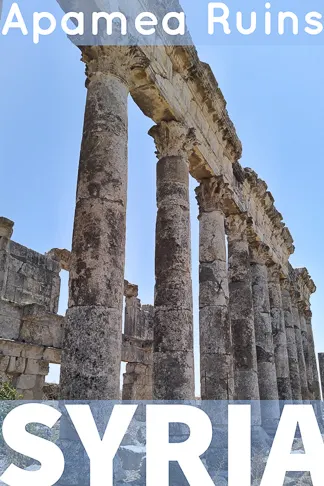Apamea ( also written Afaamia) might not be as famous as Palmyra and Bosra, the two most famous and important archaeological sites in Syria. But Apamea is, in fact, probably the most overlooked historical site in all of Syria, a site that both Mark Antony and Cleopatra visited during its heydays under the Roman Empire.
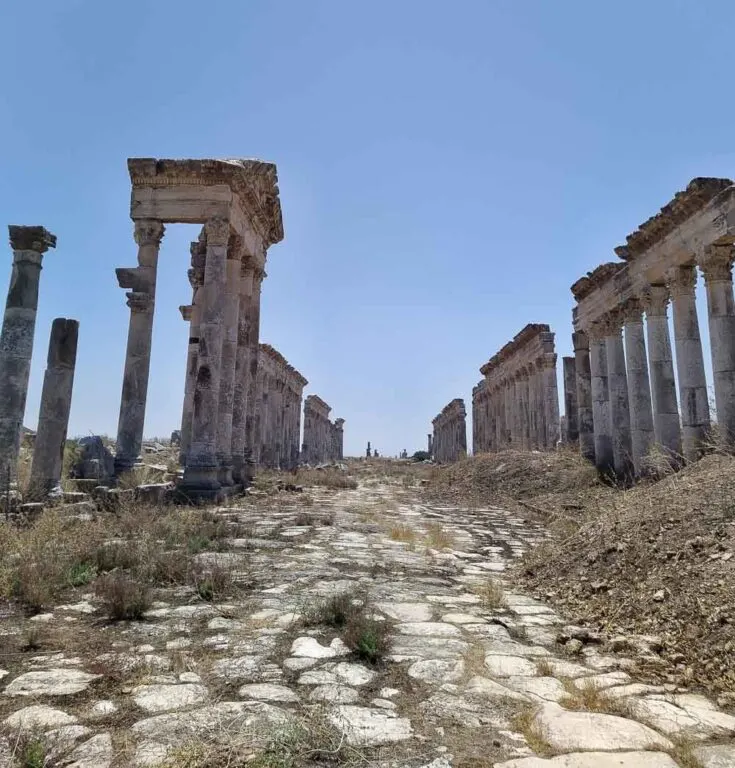
Apamea is mostly famous for its majestic collonaded street, but Apamea was also home to one of the largest Roman Theatres in the Roman World, a theatre that is believed to have had an estimated seating capacity in excess of 20,000.
The Great Colonnade at Apamea which is among the longest and most famous of all Cardo Maximus in the ancient Roman world.
The Great Colonnade at Apamea is a road to nowhere these days; the almost 2 km long and 37m wide avenue originally had 1200 columns standing 10m tall on each side along the avenue.
But today, only about 400 Colonnades remain standing which most have been re-erected.
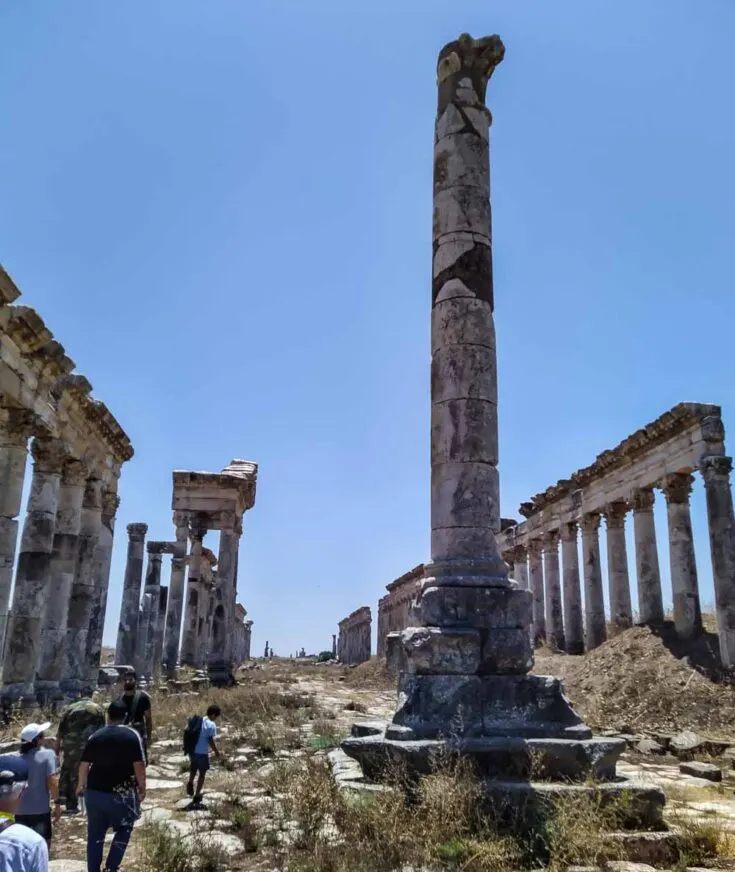
The Cardo Maximums, often named just Cardo, was the main or central north–south-oriented street in Ancient Roman cities and military camps.
But unfortunately, during the war in Syria, so have Apamea been one of the most affected sites as a result of ongoing illegal excavations, which are centred on the eastern, northeastern, and western regions of the city.
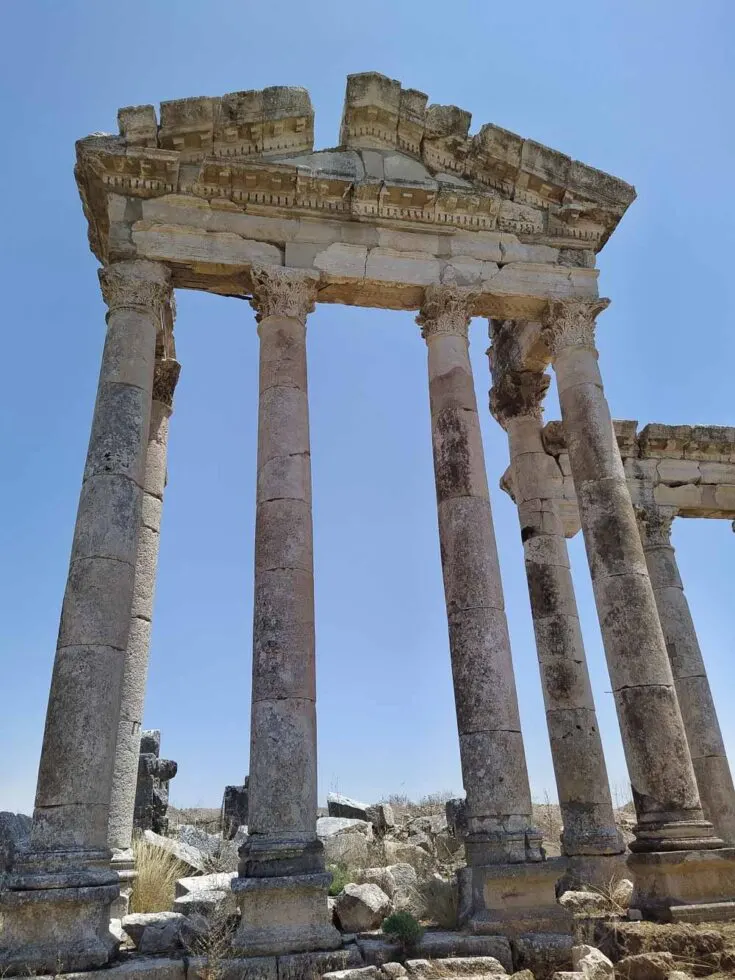
Armed gangs often supported by Turkey have systematically carried out illegal excavations around the site, using bulldozers and heavy machinery to search for historical artefacts, targeting mosaics and under valuables that might have been laying deep underground.
Some parts of the site holes as deep as 20m have been duged throughout the site, in the floor of the temples, churches, and baths and around the colonnades.
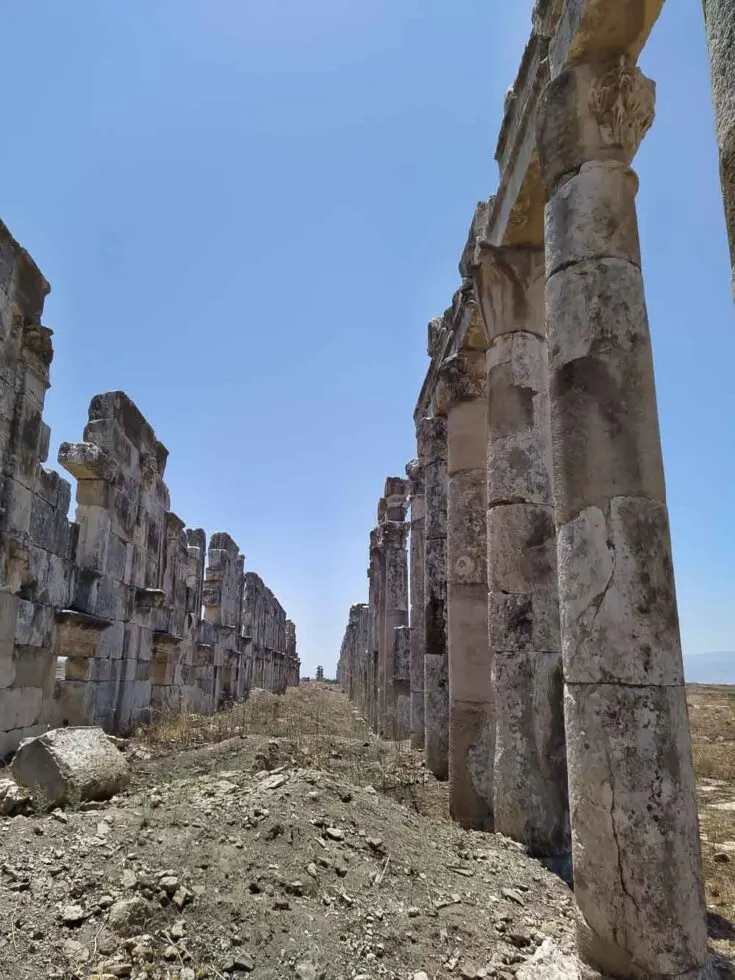
All the historical artefacts that the terrorist found around Apamea have been sold on the black market to collectors around the world; this has been one of the biggest incomes to the gangs around Syria during the war.
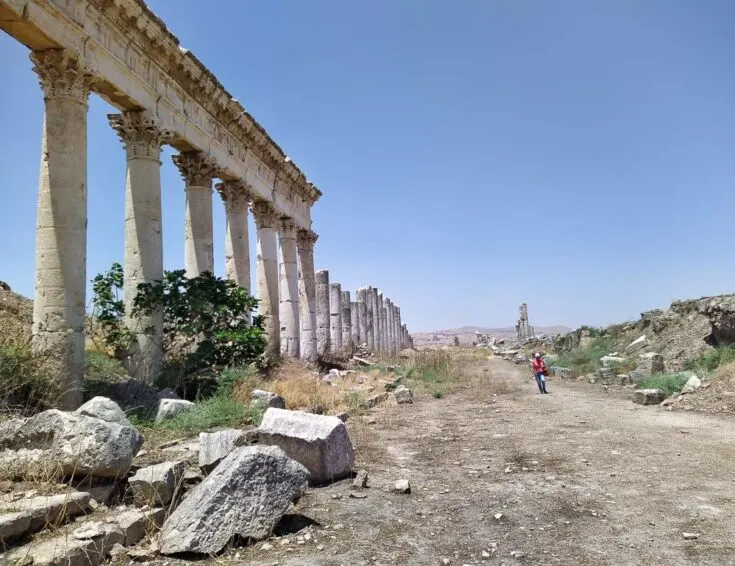
All Photos in this post was taken in July 2021 if not stated otherwise. The photos in this post are some of the latest photos available of the Apamea archaeological site.
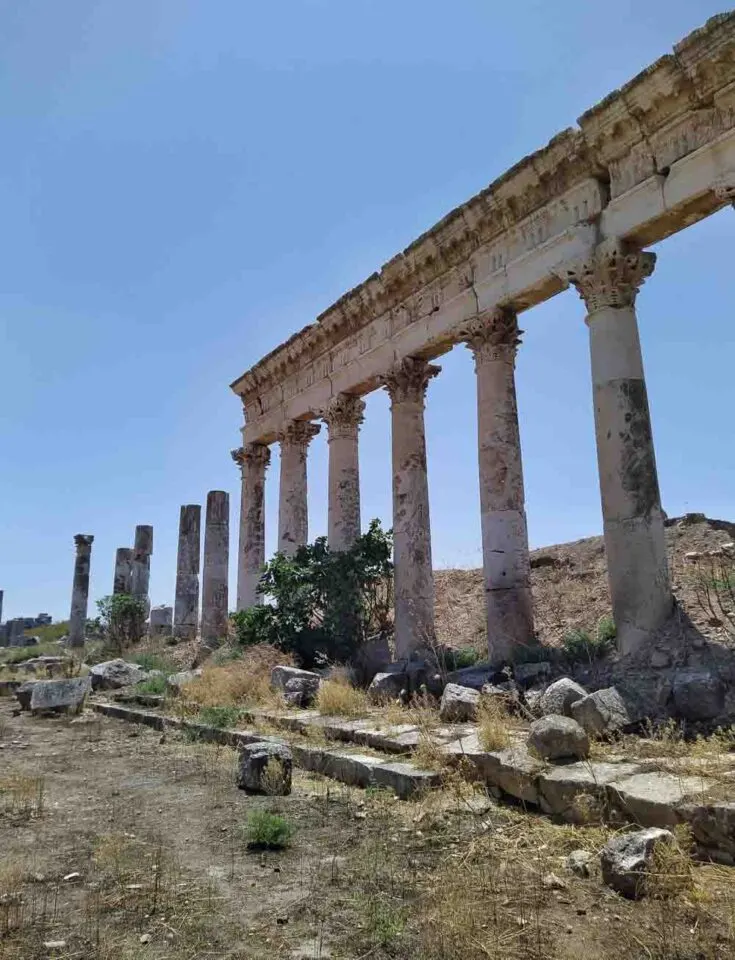
Apamea History
Apamea was once one of the most important cities of North Syria
Following the death of Alexander the Great in 323B.C in Babylon and then the subsequent break up of Alexander´s large empire following his death.
General Seleucus I Nicator, which was one of Alexanders generals, took control over northern Syria and established the Seleucid Empire early in the third century BC and eventually assumed the title of basileus (king) and founded Apamea in 301 B.C due to its strategic location at that time.
It soon became a prominent military and commercial centre.
During the Seleucid period, Apamea flourished, and its height it´s estimated to have had a population of 120 000; more than 30 000 horses and 500 elephants were kept here and trained to be used in warfare.
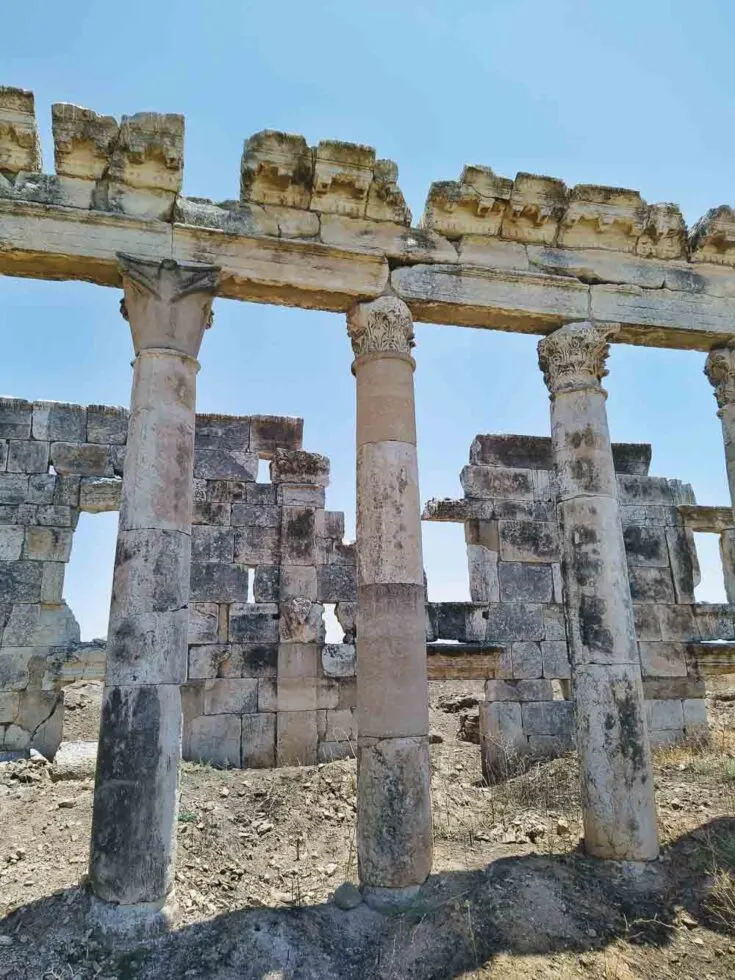
The fortunes of the Selecucids Empire fluctuated dramatically, the empire expanding and contracting repeatedly, but by the first century BC, it was in a terminal decline, and finally, in the year 64 B.C, Apamea fell to the armies of General Pompey.
Under Roman control, it continued to be an important military centre.
But a large earthquake in AD 115 caused serious damage to the site, but it also resulted in heavy building activity around the area, especially from AD 98 -117 and during the emperor Marcus Aurelius AD 161 -180 (Yes, the Roman Emperor from the Gladtior Movie from 2000).
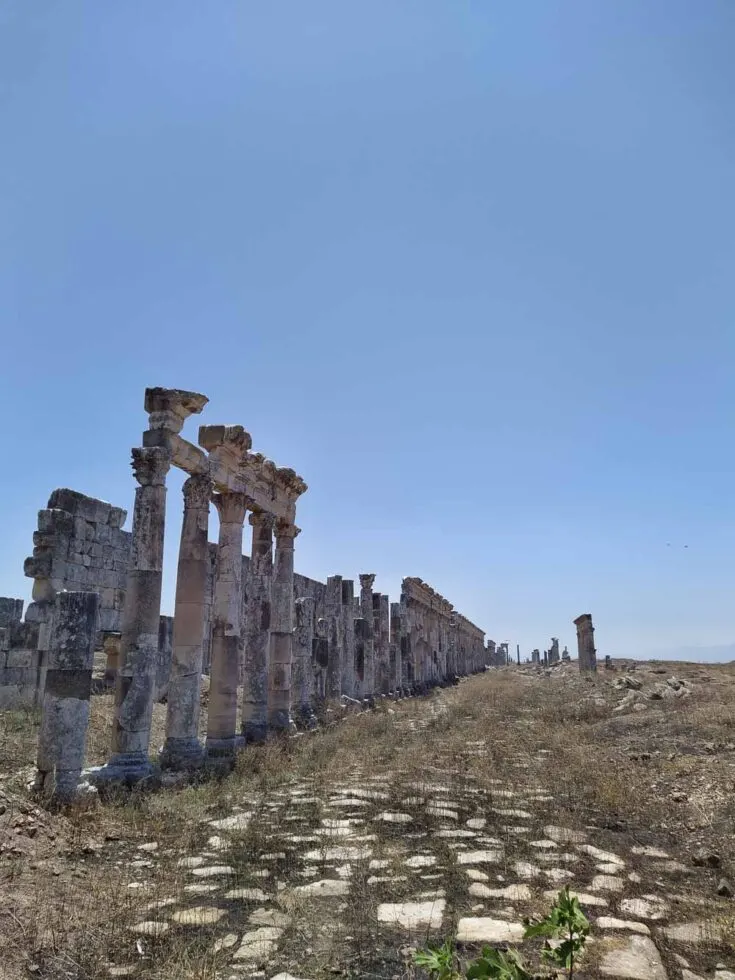
By this time, Apamea was a flourishing and important Roman city with a population of around 500 000. An important cultural centre in the region and home to notable physicians, philosophers, academics and a Bishops during that time. Cleopatra and numerous Roman emperors also visited Apamea during this period.
During this time, a Roman Theatre was constructed at Apamea to be proud of in addition to the Great Colonnade, which was the longest street in Syria at that time, and it´s still the longest historical street in Syria.
The main street in Palmyra is 1,2km long and with a crooked angel.
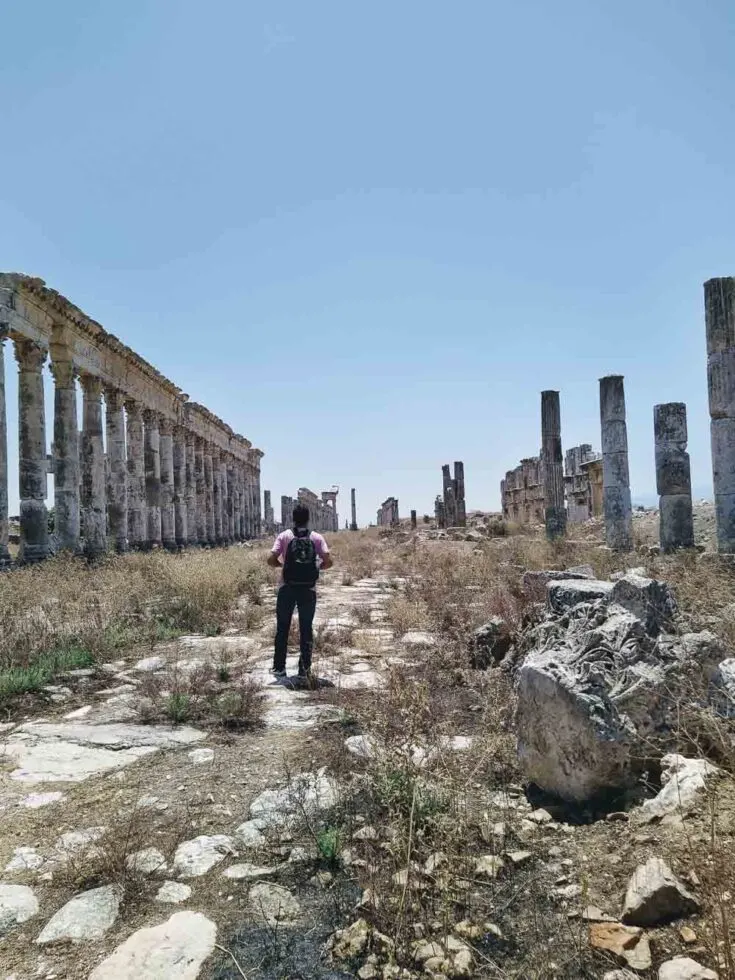
The Roman theatre was a massive construction at that time, with the credentials of an outstandingly large 139-meter seating section. It is estimated to have held audiences of over 20,000 people, and there is only one other larger known theatre (Theatre of Pompey).
It was here that the philosophical school known as the Neo-Platonism was developed, combining Platonism with oriental elements.
The prosperity of Apamea continued into the Byzantine period when it became the seat of a Bishopric and the capital of Roman Syria, also known as the Syria Secunda.
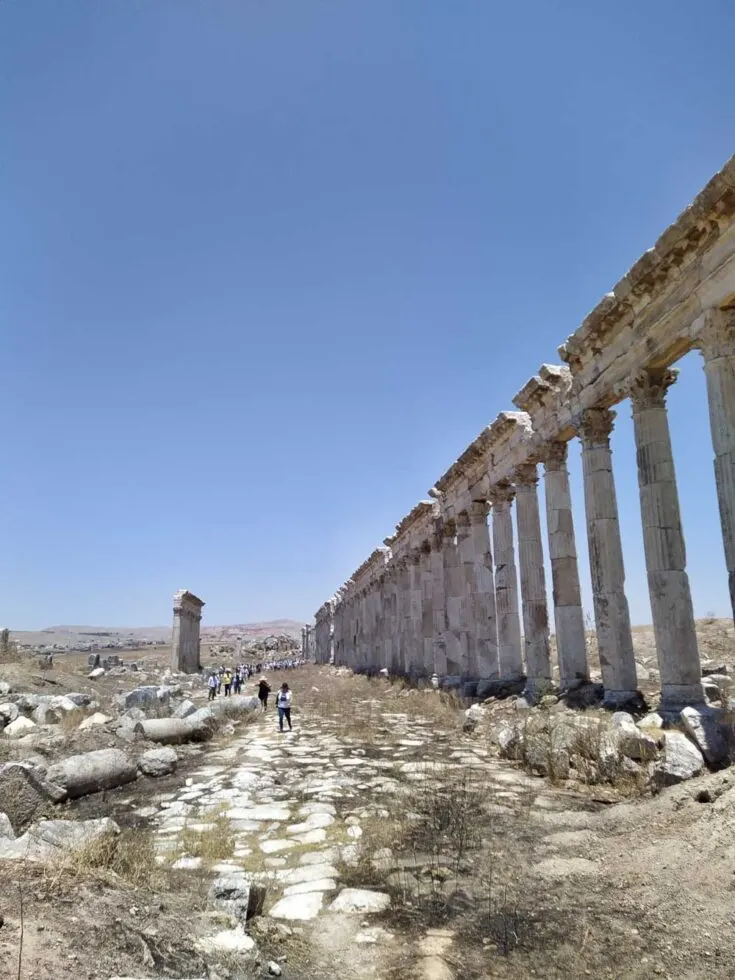
However, in AD 540, the Persian armies of Chosroes invaded Syria, sacking Aleppo and Antioch before attacking Apamea.
The Byzantine was restored its power for a while, but in AD 611, The Persians once again attacked Syria and took control over Apamea in the year AD 612 and held control over the site until AD 628, when the Byzantines regained control over the site, before finally losing it to the Muslim invaders in AD 636.
During the Islamic control over the region, Apamea declined in importance, and it was not before 1106 that the Crusaders took control over the site, but then in 1157, the site was destroyed by a huge earthquake.
Then during the Ottoman period, the place was used as an important resting place for pilgrims on their way to Mecca.
A Caravanserai built in the 16th century during the Ottoman empire is now home to the Apamea Museum.
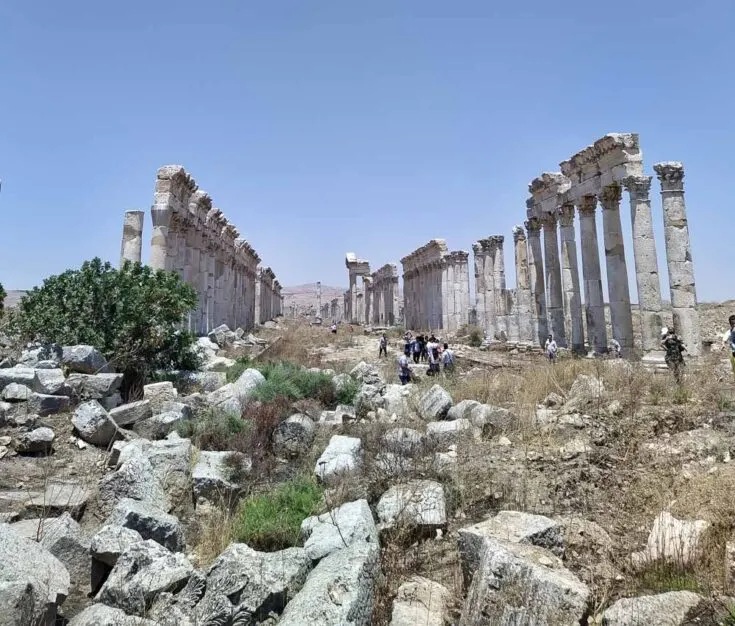
Big parts of Apamea was excavated by Belgium archaeologist in the 1930s, with almost all of the most important and beautiful findings was transferred to the Historical Museum in Brussel.
But tragically, the museum was bombed during World War 2, destroying everything except for the famous “The Great Hunt Mosaic”, which is to this day on display at the Art & History Museum in Brussel.
Where is Apamea ruins located?
The ancient ruins of Apamea are located on the eastern bank of the Orontes River in the northwestern part of Syria. In the Hama Governorate, which overlooks the Al-Ghab Plain.
The closest large city is Hama which is located 55 km/34 miles south of the site.
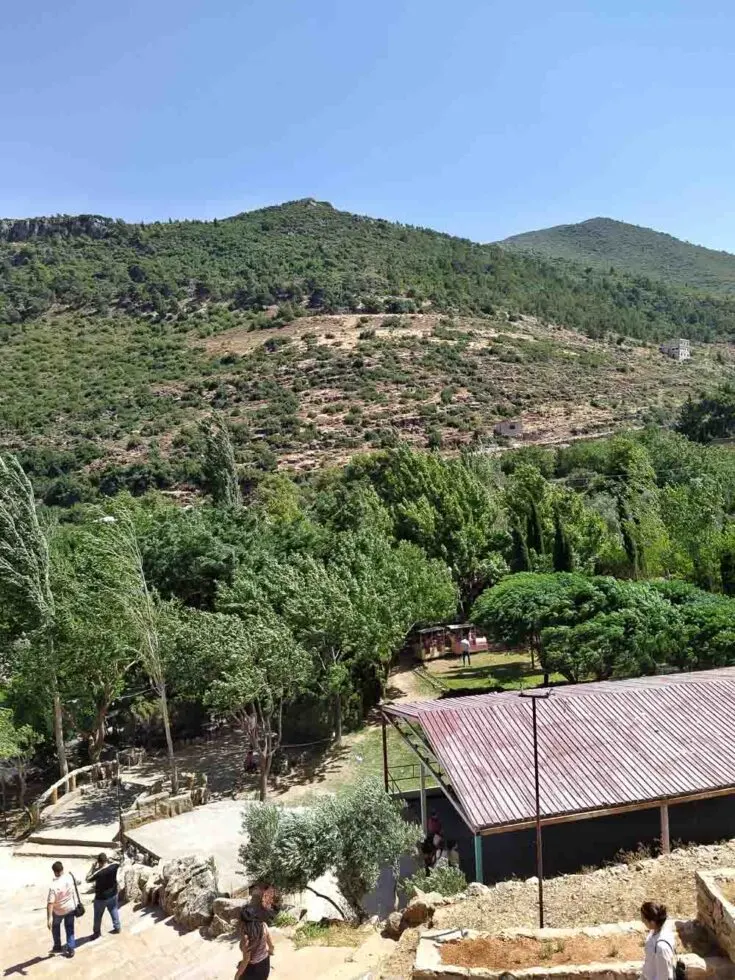
Apamea Before The War
Before the war, Apamea was a popular stop for tourists in Syria, and often the main stop tourist did between Aleppo, the second-largest city in Syria, and Hama, home to the famous waterwheels.
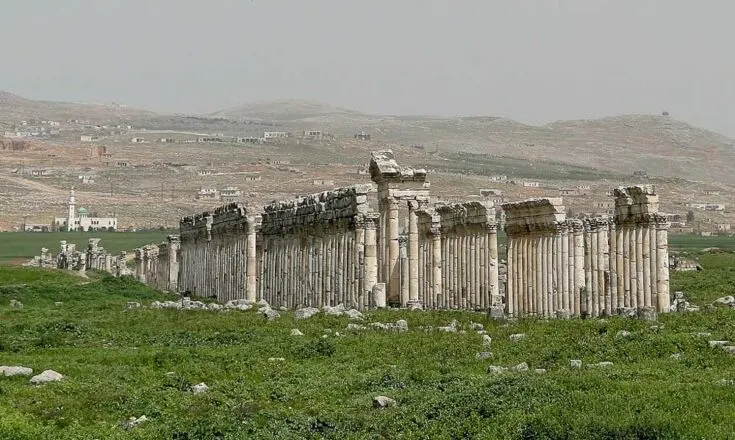
The Apamea Museum, which opened in 1977 inside an old caravanserai from the Ottoman area, was one of the most important museums in Syria and home to some of the most impressive mosaics collections in the middle east.
Apamea is where many of the most impressive mosaics from ancient times in the middle east have been found.
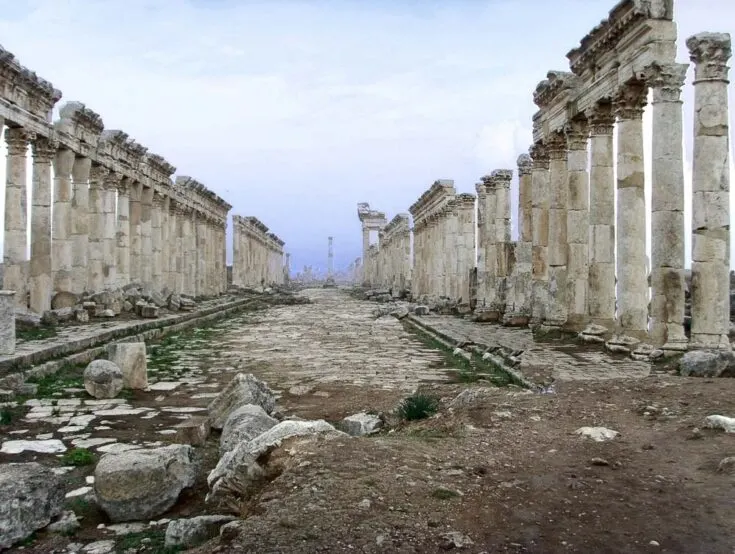
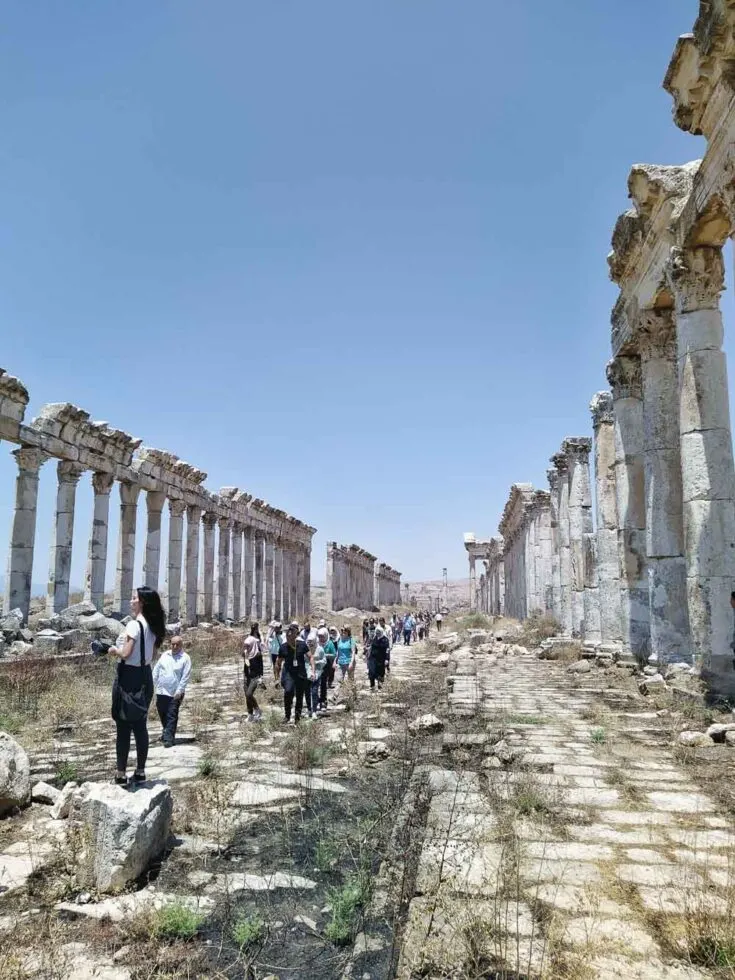
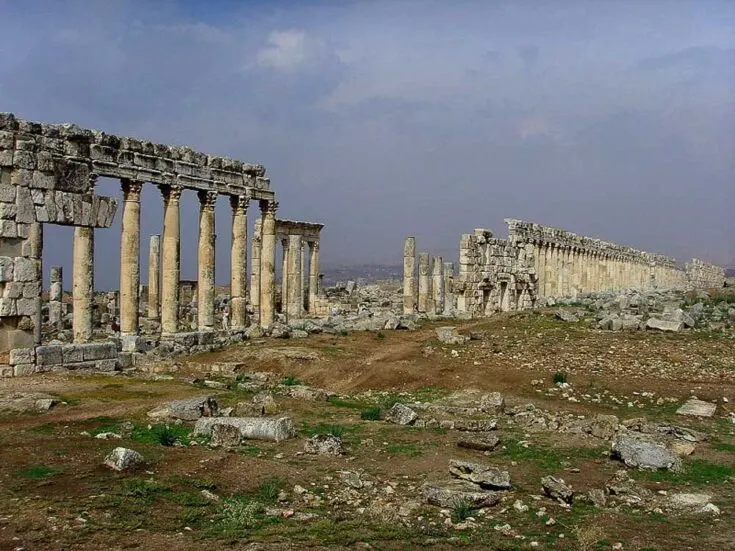
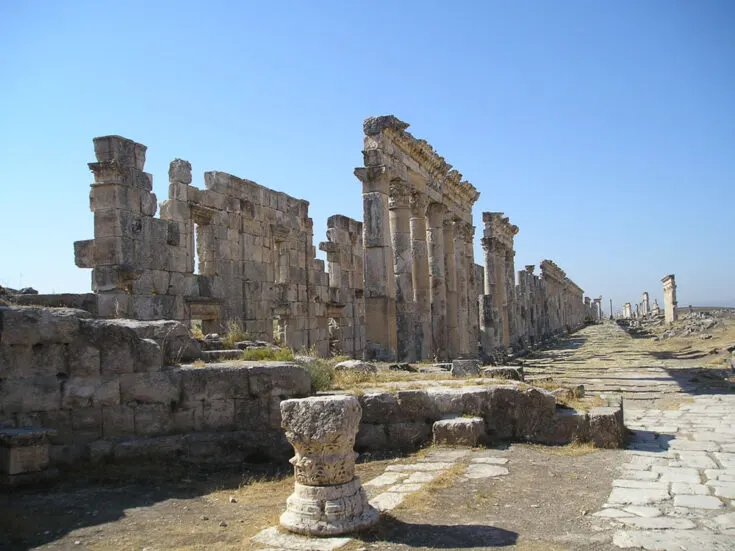
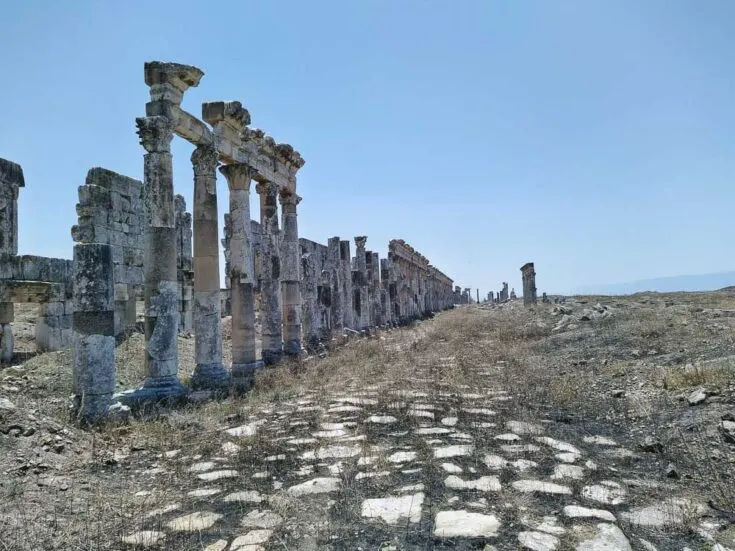
Apamea After The War
The ancient ruins of Apamea were retaken by the Syrian army in May 2019, after terrorists have had controlled the site since 2012.
But it was not before July 2021 that the site did receive its first group of tourists since the begging of the war.
The Center for Peace, nonviolence and human rights is presenting Apamea, Syria, as a part of its campaign “Architecture and History” in the framework of the INTEGRA project.
Are you wondering which of the historical sites around Syria that are still possible to visit, and which sites around Syria that has been destroyed by the war?
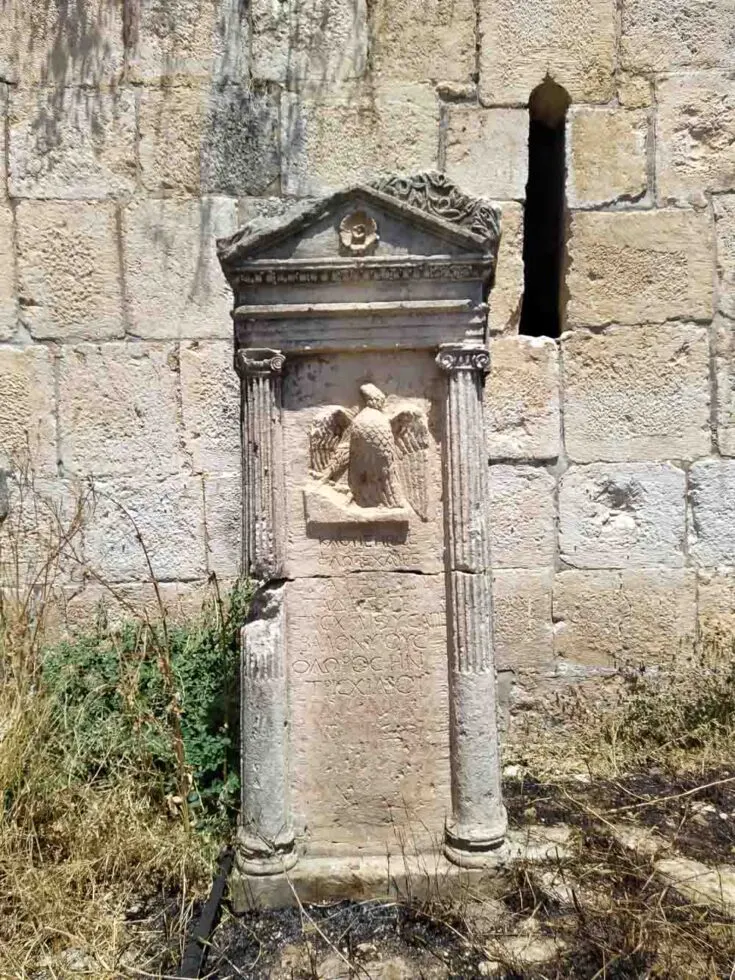
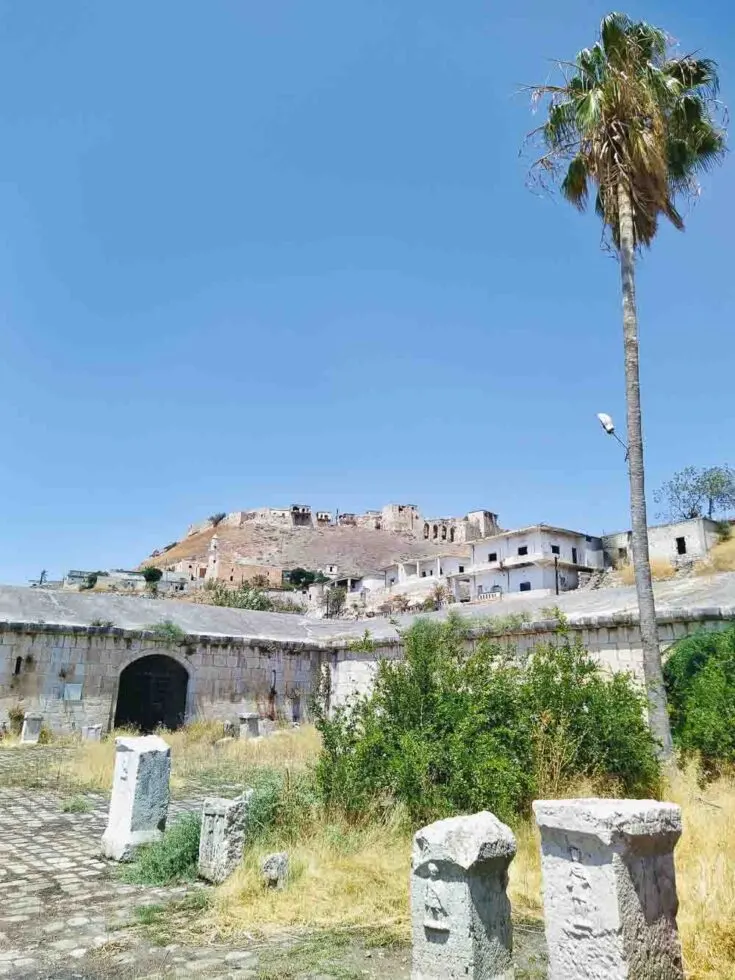
Sattelite photo from Apamea 2011 vs 2014
A split satellite view over the archaeological site of Apamea was taken in July of 2011, just months after the conflict in Syria began, and on the right, how the historical site appeared on May 2, 2014.
Thousands of holes had been dug all around the site by armed gangs, which are supported by Turkey; the armed gangs used hand tools and heavy machinery to look for historical artefacts to sell on the black market.
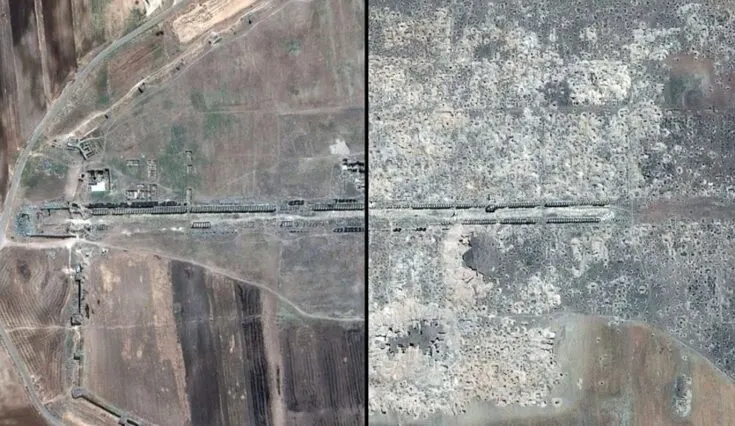
Tourism Returns to Apamea in Syria.
When you visit Apamea, you will feel a strange feeling, a place with a lot of destruction and a small number of residents who have returned to their destroyed homes.
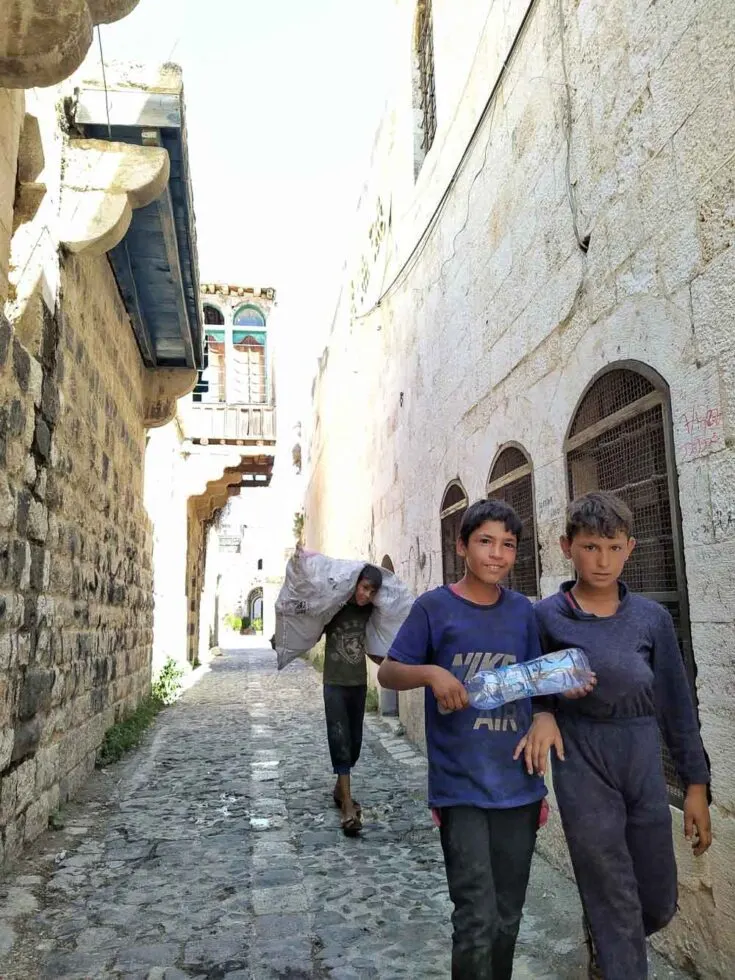
The Syrian army is deployed in the area with its various weapons to ensure protection. The frontline is not far from the site.
The first group of local Syrian tourists was able to visit the site in July 2021 as the first since the war began; they were able to explore the historical site and take pictures for the first time in almost a decade.
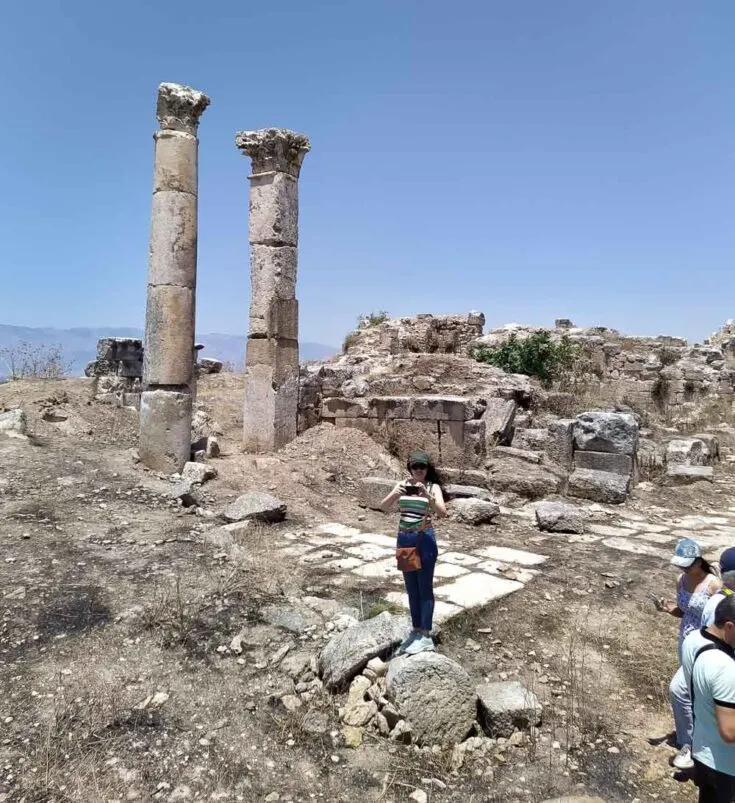
However, Apamea is currently not open to foreign tourists, but that might change in the near future.
If you want to visit Syria and its historical sites, so are you required to have a local guide these days,
One guide that´s reliable and recommend is Ayoub from Marrota Travel; [email protected] +963954840021 WhatsApp.
